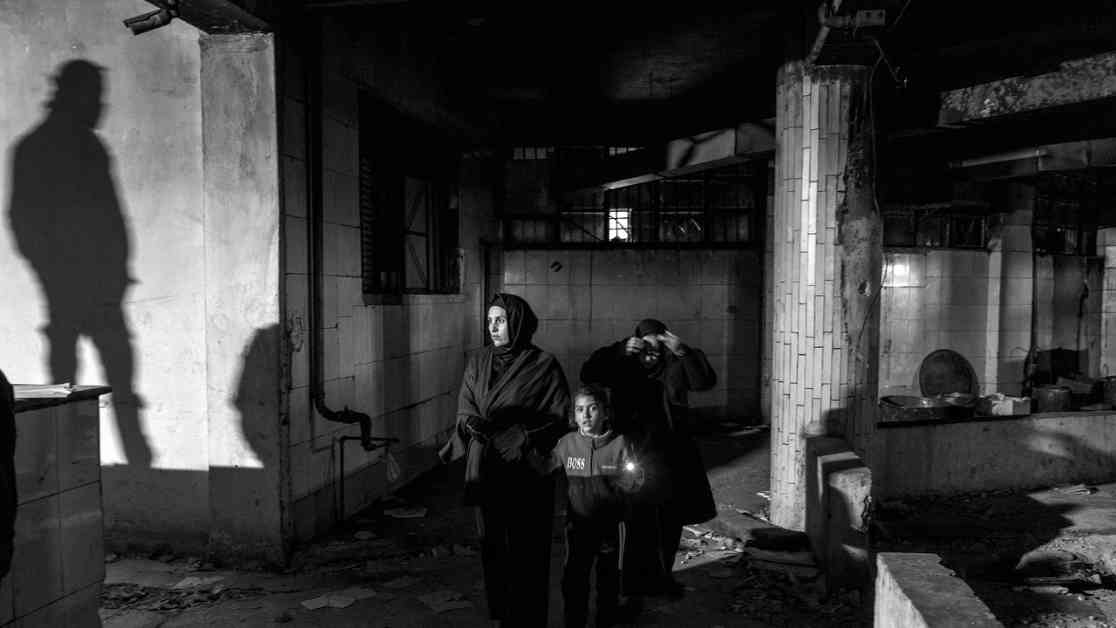Reuniting Families: Finding Loved Ones in a Liberated Syrian Prison
After the fall of Bashar al-Assad, the country tries to discern the fate of people the regime locked away. Families with missing relatives search inside Sednaya prison, after the end of the Assad regime.
On Wednesday, at Sednaya, a political prison in Syria, hundreds of people prowled the grounds. It was the third day after an astonishing rebel offensive deposed Bashar al-Assad, who had ruled as a tyrant during thirteen years of vicious civil war. After the rebels swept into Damascus, the jailers had fled Sednaya, and the prisoners had been set free. The visitors on Wednesday were relatives of men who were known to have been held there but had not reappeared. On the grass outside, burned black in places by recent fires, groups of them camped out in a grim limbo.
Desperate Search for Missing Loved Ones
That morning, a Turkish search-and-rescue team in blue coveralls was busy with shovels inside the darkened administration block, working at a small rectangle of dirt where a concrete slab had been torn away. Rumors persisted that there was a buried hatchway to a “red prison”—a secret underground facility where hundreds, or even thousands, of prisoners might still be alive but dying of hunger, thirst, or asphyxiation. Whether or not the rumors were true, most everyone at Sednaya seemed to believe them, and several relatives approached me to ask whether, as “a Westerner,” I could provide the technology to peer through the floors. The leader of the Turkish team told me that his group had nothing but shovels. “We are here because we want to show solidarity,” he explained, gesturing at the desperate people around him.
Being entombed alive is an apt metaphor for a populace that had its civic freedoms squashed by the Assad dynasty for half a century. Hafez al-Assad, a secular nationalist from the minority Alawite sect, ran Syria tyrannically from 1971 until his death, in 2000. He was succeeded by his son Bashar, a former ophthalmologist who proved no less repressive than his father. The civil war erupted in 2011, after Bashar responded to a peaceful demonstration with deadly force. Since then, it has been estimated that six hundred thousand Syrians have been killed; some six million, nearly a third of the population, have fled into exile.
Brutality and Fear at Sednaya Prison
Throughout the decades of the Assads’ rule, resistance of any kind was brutally quashed, and offenders were detained and tortured in a network of dozens of facilities across the country. Sednaya was the most infamous. Built in the late eighties, on a barren limestone hilltop forty minutes from downtown Damascus, it acquired such a fearsome reputation that many Syrians refused to utter its name aloud. In the first days of the war, I visited the hills nearby and spotted the complex. When I asked my driver what it was, he shook his head. Asked again, he whispered, “Sednaya” but would add only that it was a “terrible” place.
Since then, as the war intensified, the prison became, by all accounts, even more terrible. In 2021, the Syrian Observatory for Human Rights calculated that as many as thirty thousand people had been executed there since the war began. But the number of people who survived within the prison’s walls was, like most everything else about it, impossible to know. When Sednaya was liberated, last weekend, some of those freed had been there for decades. One inmate had reportedly been imprisoned since 1981; he had entered as a young man of twenty-seven and emerged, a ghastly Rip Van Winkle, at seventy.
A Glimmer of Hope in Despair
For the family members who have come to Sednaya—after enduring years with no news about their fathers, brothers, sons, and nephews—any bit of evidence stirs a despairing hope, which shows plainly in their body language and on their faces. The crowd that gathered around the Turks shovelling at the floor resembled relatives of people buried in earthquakes; they watched avidly, helplessly, for any indication of life. Other visitors wandered through cellblocks, some stooping to examine the documents on prison stationery that lay everywhere. I asked one dazed-looking man about a paper in his hands. Studying it as if for the first time, he said that it had to do with food allocation—not for the prisoners but for the guards. “It says the guards have been transferred, so they don’t need the food anymore,” he said. Another visitor thrust his phone in my face. It was playing a video of a young man in shorts being beaten in a cell at Sednaya. There were vicious red welts on his body; he whimpered in fear and pain as guards struck him.
For years, as reports of atrocities filtered out, Bashar al-Assad remained in power, propped up by Russian and Iranian allies. As I entered one hallway, a woman in a robe began shouting, “Now you come to look. Why didn’t you come before? Why didn’t you believe us? Why didn’t you hear us when we said they were killing us!” After a moment, she moved on, but a nearby man began shouting, too. He wanted revenge, nothing less or more. He would get a weapon and kill the Alawites—Assad’s sect, which some members of Syria’s Sunni majority see as complicit in his repression. The man vowed to kill every man, every woman, and every child he saw.












